




We know eating less calories -- at least in the short-term -- results in losing weight; well, how about eating the same amount of food and still losing weight?
Sound impossible? Try again.
The other side of the weight loss equation is calories burned, some of which are burned automatically throughout your day (i.e. your BMR, or basal metabolic rate), and some of which are burned through your workouts.
Burning more calories comes down to:
First, let's talk about maximizing calorie burn today, which takes place by training all three energy systems. The body's energy systems are:
Effectively, you'll want the first rep of every giant set to be explosive, then you'll want to go as fast as you can for up to a minute, and finish the 2-4 minute set with slow and controlled movements until the end.
Practically speaking, here's how this looks:



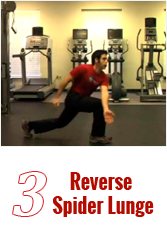
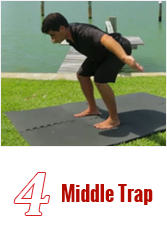
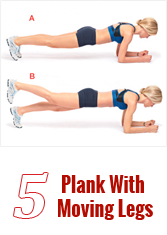
Rest 2-4 minutes before next set.
NOTE: The first rep of your squat with med ball power press should be explosive, then continue at a sprint pace for push up superset -- with "sprint" being defined as going as fast as you can while maintaining perfect form -- and slow down to slow, controlled reps for reverse spider lunge onward. This will challenge all three energy systems, allow ample opportunity for recovery, and maximize the caloric burn from your workout.
As a word of caution before you try energy system training at home:
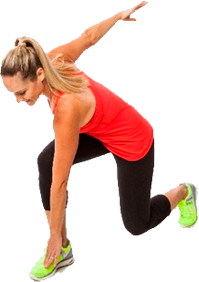
You see, it's not only 'strength' that matters when you exercise, but also 'length'. If you've always been tight, it's possible one of the biggest limiting factors to increasing the length of your muscles is learning to let go.
I've noticed a lot of clients feel tight when I initially stretch them, but when we 'turn off' the signal to their muscles, they have plenty of available length. This is a communication -- not range of motion -- issue.
If you're wondering if you might be more flexible than it seems when you stretch or move, you'll really benefit from the concept of reciprocal inhibition. This means your body is hard-wired to turn off one muscle when the equal and opposite one -- or the antagonist -- is recruited. Simply put, when you recruit your biceps, you "turn off" your triceps, and vice versa.
Advanced fat loss is about maximizing the metabolic demand of your workout, which means exploiting every possible opportunity we can. When we turn on a muscle, quickly turn it off -- and work the equal and opposite -- we are exercising all sides of your body, driving a higher metabolic demand, and forcing more calories to be burned within a given workout.
Another great way to increase your flexibility is to divide "stretching" into three categories, as you'll see below:

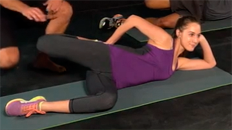
Flexibility
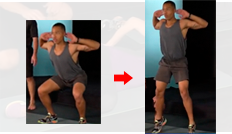
Mobility


Tissue Release
Generally speaking, 'flexibility' is considered the easiest level, mobility next, and tissue release the most advanced. However, clients who have been stuck without progress for quite some time often benefit from starting with 'tissue release' to get rid of knots that prevent their muscles from stretching.
These "knots" are myofascial restrictions, limiting movement within a muscle, but also taking up the slack for your entire body. By releasing them, you are giving your body its resiliency back. And with resiliency, you can challenge your body to new limits; accelerating fat loss, range of motion, and strength with every workout.
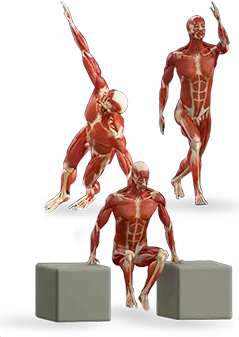
In summary, we are going to burn more calories in a given workout by challenging all three energy systems, making sure to balance both strength and length, turning entire muscles on/off at-will, recruiting muscles from your spine-outward, and stacking exercises in the right order so they strengthen nerve signals to muscles with every exercise.
As you can see, we are stacking multiple fat loss principles together that, individually, increase the number of calories burned from a workout. When combined, well, let's just say it's exciting to wake up and look at yourself in the mirror.
Now that's a lot to think about, but it gets even more exciting when we plan for long-term results. Long-term fat loss requires you avoid injury and increase your metabolism.
In order to increase your metabolism, you'll want to exercise as many joints as possible within a given workout. This serves to burn more calories today, but also long-term. I'd like to discuss three rather unusual and advanced fat loss concepts with you:
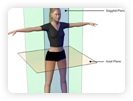 Multi-Planar Movement
Multi-Planar Movement 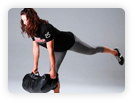 Movement Complexes
Movement Complexes
 Muscle Balancing
Muscle Balancing
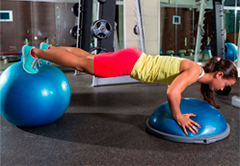
Multi-Planar Movement, or 3D Movement, means we are going to choose exercises that challenge our bodies in all directions, like the real world. In the real world, we have to step off curbs, reach out for an object, sprint away from a car, crouch onto the ground and get back up, or hop over a puddle onto slightly uneven ground. Each of these examples serves to illustrate a point that "normal" gym exercises that only move in one or two directions aren't going to suffice for 'functional muscle gain.'
Move forward-backward, side-to-side, and with rotation to recruit all muscle fibers and maximize the metabolic demand. This is most easily done by choosing a direction of movement for every giant set, and then alternating the direction of movement for all five exercises.
Alternating five exercises in a row -- within a given set -- is referred to as a giant set. Over the last 94,000+ clients we've trained, we've learned that stacking exercises into giant sets has produced the best results. We believe this is due to the ability to train all three energy systems, move in all three directions, and balance muscles within each workout.
One common mistake when training with supersets, giant sets, or in circuits is not taking enough rest. In order to rest your ATP-PC system, it takes 4-5 minutes from the first rep of your first exercise. This means you'll need a minimum of 2 minutes rest after your set in order to ensure you are able to target this energy system in the following set.
Most people realize the benefit of 3-5 sets of a particular exercise while training. I like to think of doing multiple sets as:
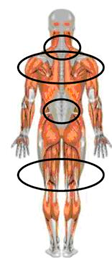
So it stands to argue this applies to energy system training, as well. This is yet another reason why dividing your workout into 3-5 giant sets can be massively beneficial to your fat loss results.
Muscle balancing refers to balancing your body left-to-right, front-to-back, and top-to-bottom. Basically, we want you to be as symmetrical as possible, so we can take pressure off joints and help you reach your potential strength.
When joints aren't properly aligned, sub-sensory nerve signals turn off muscles to prevent injury. This means it's impossible to recruit an entire muscle and get the full metabolic effect from an exercise.
Instead, when you align muscles and balance your body, signal strength increases, leading to improved coordination, muscle timing, and muscle sequencing. Improved coordination means less energy spent on preventing injury and more energy spent on fat loss. Muscle timing means a muscle turns on at the appropriate time within a given exercise, so you don't end up experiencing a weak spot in the range of motion (like the bottom of a push up, pull-up or squat). And muscle sequencing refers to recruiting muscles from your spine-outward. In doing so, you're strengthening the signal from your nerve to muscle, thereby increasing your strength.
Here's a better example of all this information combined into a single workout:
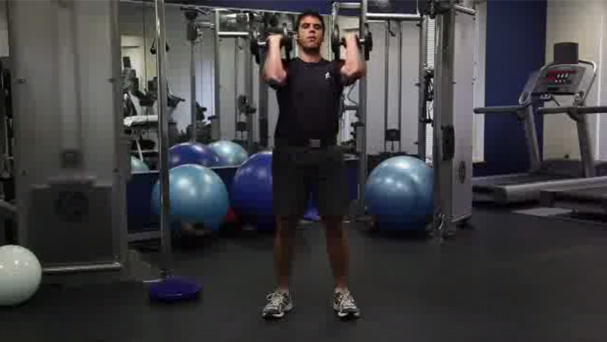
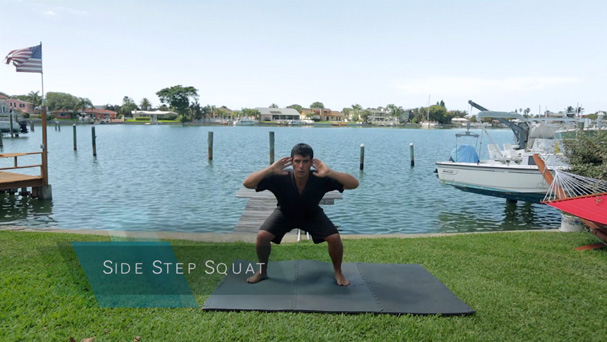
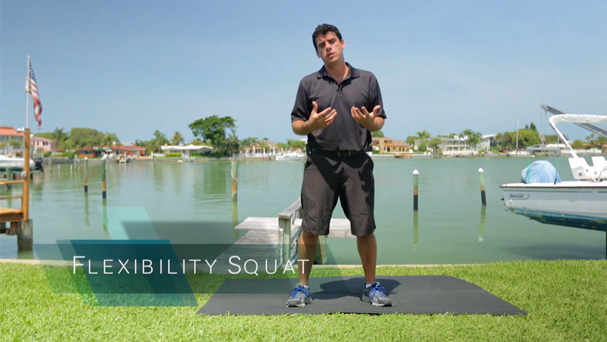

Finally, we'd be amiss to neglect discussing 'Movement Planning', which is a fancy way of saying we can think about a movement before we do it, visualize it in our mind's eye, and then move more successfully. Sports Psychology studies the movement planning center of the brain in great detail. One of my biggest takeaways is there is clear evidence you can increase contractile strength of a muscle by up to 30% by fully utilizing the premotor area of your brain before doing an exercise.
Now, I've played with this idea, tested it on my own, and experienced similar results. It's easy to test: simply lift a weight without thinking about it, and then do it again after visualizing the exercise completely first, and see if you can lift more weight the next time around. If you see even a slight gain, repeat this visualization exercise over a period of six weeks and track your progress.
If your experience is anything like mine, I think you'll be blown away. Imagine the effect of 30% more strength with every rep of every exercise, of every workout you do. We're talking about thinking your way thin. Pretty neat, huh?
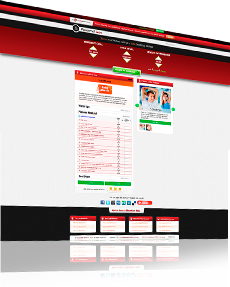
If I had to guess, this is a lot to take in. Heck, it took us over 9 years, 94,000+ clients, 1,000+ in-person clients, and a lot of mentorship to put all of these factors into a single workout. And, no matter how many times we've done it, it takes A LOT of time to carefully design a truly high quality workout.
For this reason, we built a software that designs workouts for us, using all of the 'fat loss rules' you've learned. It's called Create My Workout, and it's as easy as choosing your workout goal, skill level, and length of time you want to exercise -- that's it. In 3 seconds flat, you'll get a fully optimized workout you can save, schedule, or share with anyone you want. Plus, you'll be able to track your results and measure progress towards your goals.
